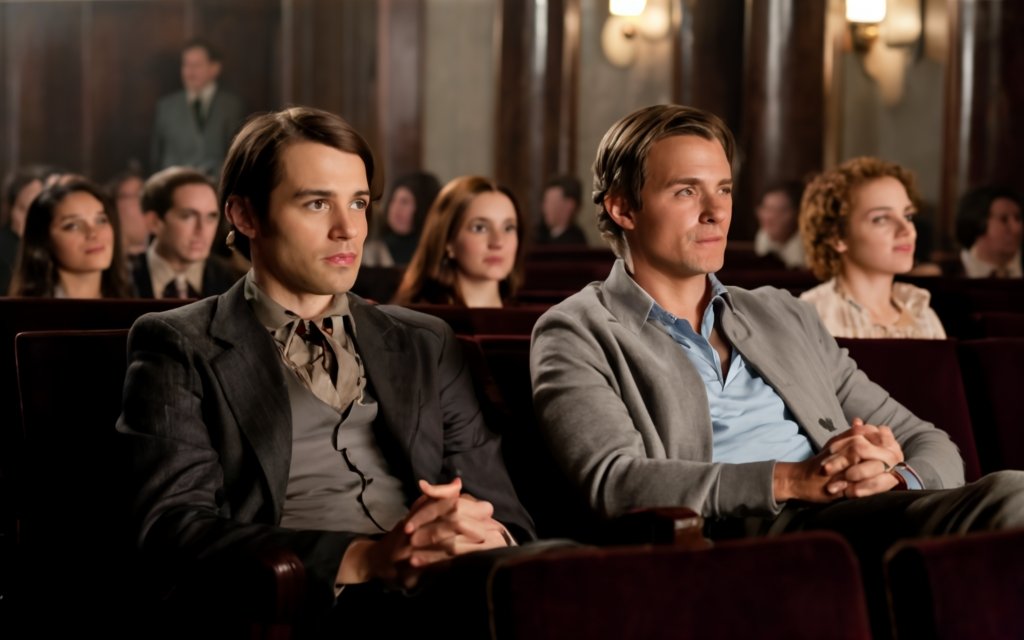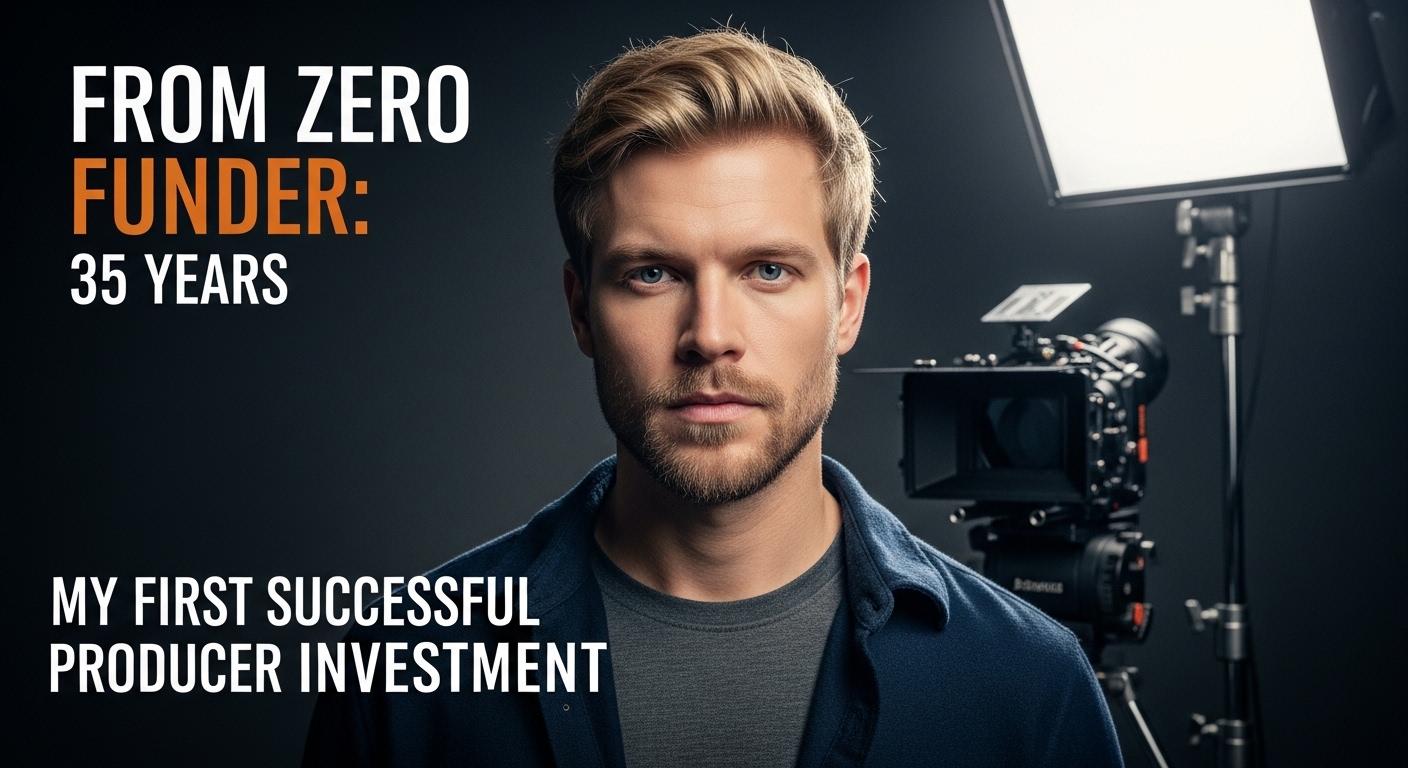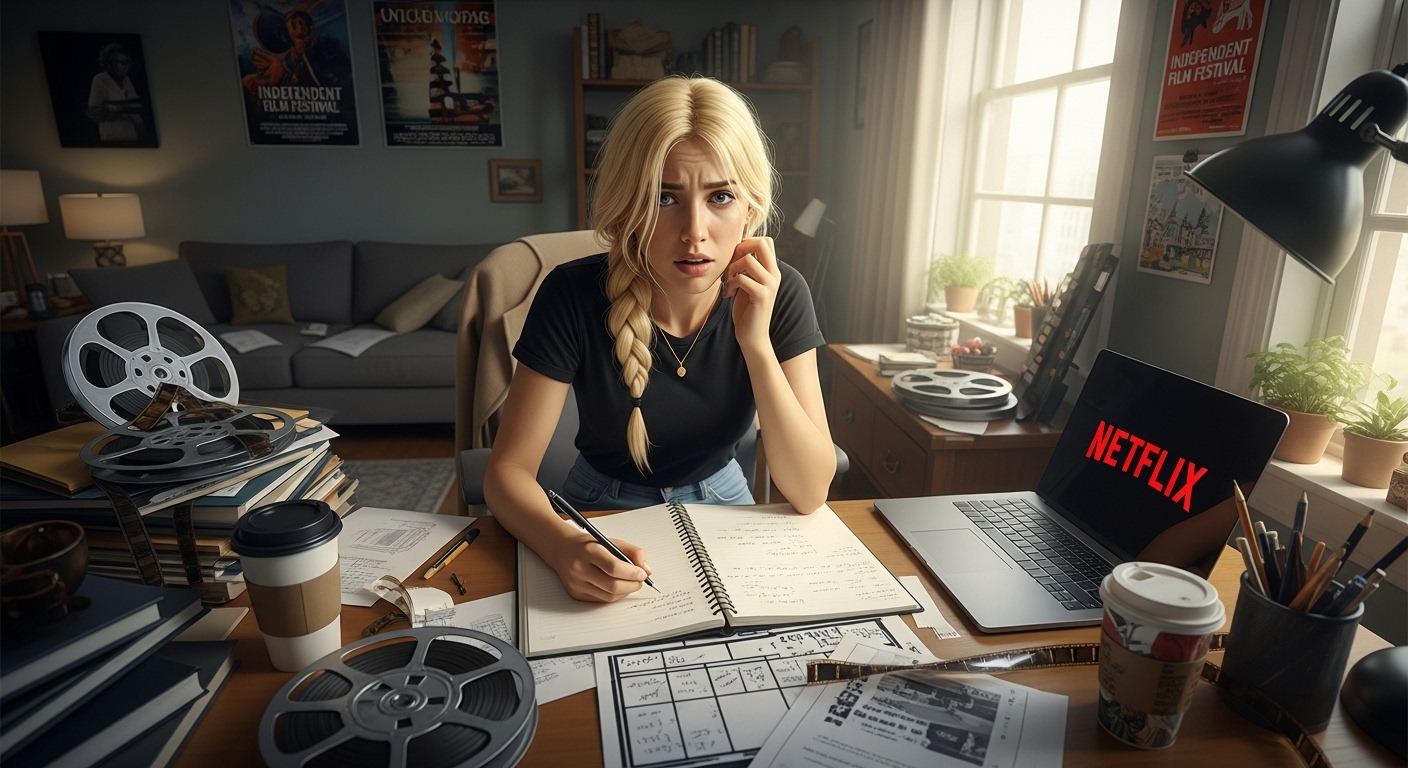Movie critics evaluate films based on a range of factors, some more objective and others more subjective. Here are some key things they look for:
Technical elements:
- Plot and storytelling: Is the story original, engaging, and well-structured? Does it avoid clichés and offer fresh perspectives?
- Acting: Are the performances believable and nuanced? Do the actors embody their characters effectively?
- Directing: Does the director demonstrate a clear vision and mastery of filmmaking techniques? Is the pacing balanced and the editing seamless?
- Cinematography: Is the visual style striking and appropriate for the story? Are the camera angles, lighting, and composition used effectively?
- Sound design and music: Does the sound design enhance the story and atmosphere? Does the music complement the mood and emotions?
Artistic merit:
- Themes and messages: Does the film explore complex themes in a thoughtful and thought-provoking way? Does it have a meaningful message to convey?
- Originality and creativity: Does the film stand out from the crowd? Does it offer something new and unique to the cinematic landscape?
- Emotional impact: Does the film evoke strong emotions in the viewer? Does it stay with you long after the credits roll?
Context and impact:
- Genre expectations: Does the film fulfill or subvert the expectations of its genre?
- Cultural relevance: Does the film address relevant social or political issues? Does it resonate with the current cultural landscape?
- Historical significance: How does the film fit into the broader history of cinema? Does it break new ground or build upon existing traditions?
It’s important to note that movie criticism is an art itself, and different critics may prioritize different aspects of a film. Some may focus heavily on technical execution, while others may be more interested in the film’s emotional impact or cultural significance.
Ultimately, a good movie critic will offer a balanced and insightful analysis of the film, taking into account all of these factors and expressing their own unique perspective.
Cracking the Critic’s Code: Inside the Mind of a Movie Maven.
Let’s be honest, folks. We’ve all squinted at those star ratings and read those cryptic blurbs, wondering what exactly goes on in the headspace of a movie critic. Are they soulless popcorn fiends, wielding thumbs up/down like judgmental robots?
Or are they cinema whisperers, deciphering hidden meanings and dissecting masterpieces with laser focus? Buckle up, film fans, because I’m here to take you on a behind-the-curtain tour of the critic’s toolbox.
Part 1: The Technical Toolbox – Building Blocks of a Good Film.
Think of a film as a meticulously crafted house. First, you need a solid foundation, and that’s where storytelling and plot come in. I’m talking originality, baby! No carbon-copy clichés here. We’re looking for fresh narratives that grab you by the collar and drag you through emotional rollercoasters.
Think “Parasite” mind-bending twists or “Nomadland’s” quiet, soul-crushing beauty. And while we’re talking structure, let’s not forget pacing. A film that drags like molasses in January? Pass.

Next, let’s talk about interior design: performance and character portrayal. These actors aren’t just hanging pictures on the wall; they’re breathing life into the brick-and-mortar. Daniel Kaluuya’s haunted stare in “Get Out” or Frances McDormand’s stoic resilience in “Nomadland” – that’s the kind of nuanced brilliance that gets critics humming with appreciation.
Now, picture yourself stepping into this beautifully designed house. What hits you first? The visuals, of course! That’s where cinematography takes center stage. Think Roger Deakins’ masterclass in light and shadow in “1917” or the breathtaking landscapes of “Nomadland.” It’s not just about pretty pictures; it’s about using the camera to tell a story within a story.
But wait, there’s more! We haven’t even talked about the soundtrack that’s weaving its magic through the rooms or the sound design that makes every creak and groan feel like a whispered secret.
And let’s not forget the editing, the invisible hand that seamlessly stitches it all together. A bad edit can bring the whole house crashing down, while a masterful one leaves you marveling at the architectural genius.
Table 1: The Technical Toolbox Checklist
| Element | What Critics Look For | Examples |
|---|---|---|
| Storytelling & Plot | Originality, structure, pacing, emotional resonance | Parasite, Nomadland |
| Performance & Character Portrayal | Nuanced acting, character development, believability | Daniel Kaluuya in Get Out, Frances McDormand in Nomadland |
| Cinematography | Unique visual style, use of light and shadow, camera angles | Roger Deakins in 1917, Nomadland landscapes |
| Sound Design & Music | Immersive soundscape, emotionally evocative score, effective dialogue | Mad Max: Fury Road, La La Land |
| Editing | Seamless transitions, pacing, rhythm, building tension | Dunkirk, The Social Network |
Pro Tip: Don’t just judge a film by its special effects budget. Sure, CGI can be dazzling, but a well-told story with stellar performances can leave a far deeper impression than a parade of pixels.
Part 2: Beyond the Surface – Diving Deeper into Film’s Artistic Merit
Okay, the house is built, it’s beautiful, and the soundtrack is bumping. But is there anything more to it? That’s where we delve into the soul of the film, the hidden gems that make critics reach for their metaphorical magnifying glasses.
First up, let’s talk themes and subtext. These are the juicy bits hiding beneath the surface, the deeper messages that make you ponder long after the credits roll. “Moonlight’s” exploration of identity, “Parasite’s” scathing commentary on class disparity – these are the films that spark conversations and stay with you like a lingering dream.
But here’s the thing: originality matters. We’ve seen the hero’s journey a million times, thank you very much. We want films that push boundaries, experiment with form, and leave us gasping for air with their audacity. Think “Memento’s” reverse chronology or “Eternal Sunshine of the Spotless Mind’s” mind-bending exploration of memory.
And while we’re on the topic of impact, let’s not forget the emotional gut punch. A film that doesn’t make you laugh, cry, or clench your fist isn’t doing its job. “Up’s” devastating opening montage or “Coco’s
Part III: Contextualizing the Critique – Film in the Landscape of Culture.
Alright, film fans, we’ve dissected the technical magic and explored the soul of a film. Now, let’s zoom out and see how it fits into the bigger picture. Buckle up, because we’re entering the realm of contextual criticism:
1. Genre Expectations and Subversion:
Think of it like this: every genre has its own set of rules, its own unspoken contract with the audience. A rom-com is supposed to make you swoon, a horror film is supposed to make you jump. But the truly brilliant films don’t just play by the rules, they bend them, twist them, and sometimes smash them to pieces.

- “Mad Max: Fury Road” took the post-apocalyptic genre and injected it with feminist fury and operatic action.
- “Get Out” used the horror genre to deliver a chilling commentary on race relations in America.
- “Knives Out” breathed new life into the classic whodunit with its witty dialogue and subversive twists.
These films are more than just genre exercises; they challenge expectations and spark conversations that go beyond the popcorn bucket.
2. Cultural Relevance and Significance:
Movies don’t exist in a vacuum, folks. They reflect the times we live in, the issues we grapple with, the anxieties that keep us up at night. A critic worth their salt will always consider a film’s cultural context.
- “Nomadland” captured the plight of the American nomad community during the Great Recession.
- “Parasite” exposed the widening wealth gap and class struggles in South Korea.
- “Black Panther” became a cultural phenomenon, celebrating Black representation and superhero narratives.
These films didn’t just entertain; they held up a mirror to society and forced us to confront uncomfortable truths.
3. Historical Context and Cinematic Lineage:
Every film stands on the shoulders of giants. Understanding a film’s historical context means tracing its cinematic lineage, recognizing its influences, and seeing how it builds upon or departs from past traditions.
- “Once Upon a Time in Hollywood” was Quentin Tarantino’s love letter to a bygone era of Hollywood cinema.
- “BlacKkKlansman” used the blaxploitation genre to explore the legacy of racism in America.
- “The Grand Budapest Hotel” drew inspiration from the works of Wes Anderson and European cinema.
By understanding the filmmakers’ references and inspirations, we gain a deeper appreciation for the film’s artistry and originality.

Remember: Context isn’t just about awards and box office numbers. It’s about understanding the film’s impact on audiences, its cultural significance, and its place within the broader history of cinema.
Unleashing Your Inner Critic.
So, dear film fans, what’s the takeaway? By understanding the tools critics use, you can unlock a whole new level of appreciation for the movies you watch. Don’t just be a passive consumer; become an active participant in the cinematic conversation. Here’s how:
- Challenge your own expectations: Don’t just go for the familiar; seek out films that push boundaries and make you think.
- Pay attention to the details: From the sound design to the cinematography, every element contributes to the overall experience.
- Think about the context: Consider the film’s cultural relevance, historical background, and genre expectations.
- Most importantly, engage with the film on an emotional level: Did it make you laugh, cry, or reflect? How did it stay with you long after the credits rolled?
Remember, there’s no right or wrong answer when it comes to film criticism. It’s all about your own unique perspective and your willingness to engage with the art form. So grab your popcorn, put on your thinking cap, and unleash your inner critic!
Bonus Topics for Further Exploration:
- Film theory and analysis: Explore different schools of thought on film criticism, such as auteur theory or Marxist analysis.
- Online film communities: Engage with other cinephiles in online forums and discussion boards.
- Independent film festivals: Support up-and-coming filmmakers and discover hidden gems outside the mainstream.
- The future of film: Stay up-to-date on emerging technologies and trends in filmmaking.
Remember, the journey of film criticism is a lifelong adventure. So, keep exploring, keep learning, and keep sharing your passion for the movies!
Part V: Putting It All Together – Crafting a Cohesive Critique.
Alright, film fans, it’s time to put all these critical tools into practice. Here’s a step-by-step guide to crafting your own insightful film critique:
- Start with the Technical Foundation:
- Analyze the plot, storytelling, and overall structure.
- Evaluate the performances and character development.
- Discuss the cinematography, visual style, and use of camera techniques.
- Assess the sound design, music, and editing.
- Dig Deeper into Artistic Merit:
- Explore the themes, subtext, and deeper meanings.
- Assess the film’s originality, creativity, and innovation.
- Evaluate its emotional impact and resonance.
- Contextualize the Film:
- Consider how it adheres to or subverts genre expectations.
- Discuss its cultural relevance and significance.
- Place it within the context of film history and cinematic lineage.
- Structure Your Critique:
- Begin with a strong introduction that grabs attention and sets the tone.
- Provide a brief overview of the film’s plot and main characters.
- Delve into the technical and artistic elements in detail, using examples and evidence.
- Discuss the film’s context and its broader implications.
- Summarize your key points and offer a final verdict or recommendation.
- Write with Clarity and Passion:
- Use vivid language and descriptive details to bring your critique to life.
- Express your own unique perspective and opinions confidently.
- Back up your arguments with evidence from the film itself.
- Write in a clear, concise, and engaging style.
Bonus Tip: Don’t be afraid to be critical, even of films you enjoy. A good critique isn’t just a glowing review; it’s a thoughtful analysis that highlights both strengths and weaknesses.
Part VI: Becoming a Discerning Moviegoer.
Unlocking your inner critic isn’t just about writing reviews; it’s about developing a deeper appreciation for the art of cinema. Here are some tips to cultivate a more discerning eye:
- Watch a Wide Variety of Films:
- Explore different genres, eras, and filmmaking styles.
- Seek out films from diverse cultures and perspectives.
- Challenge yourself to watch films that push boundaries and make you think.
- Read Film Reviews and Criticism:
- Engage with the opinions of other critics and see how they approach film analysis.
- Discover new films and perspectives through reviews.
- Develop your own critical voice by responding to the opinions of others.

- Discuss Films with Others:
- Share your thoughts and opinions with friends, family, or online communities.
- Engage in thoughtful discussions about the film’s meaning, impact, and artistry.
- Learn from the perspectives of others and broaden your understanding of cinema.
- Attend Film Festivals and Events:
- Immerse yourself in the world of cinema and experience films on the big screen.
- Participate in Q&As with filmmakers and critics.
- Connect with other cinephiles and expand your film knowledge.
Remember, film criticism is a lifelong journey of discovery and appreciation. By honing your critical skills and expanding your cinematic horizons, you’ll find endless enjoyment and enrich your understanding of this captivating art form.
Part VII: The Critic’s Toolbox: Advanced Techniques for the Discerning Cinephile.
So you’ve mastered the basics of film analysis, you’re confidently dissecting plots and performances, and you’re even crafting your own insightful critiques. But for those who truly hunger for cinematic understanding, there’s always more to explore. Here are some advanced techniques to elevate your critical game:
1. Delving into Film Theory:
Go beyond surface-level analysis and explore the theoretical frameworks that underpin film criticism. From auteur theory to Marxist analysis, these schools of thought offer different lenses through which to interpret a film’s meaning and significance. Immersing yourself in different theoretical perspectives can open up new avenues for understanding and add depth to your critiques.
2. Deconstructing Mise-en-Scène:
Move beyond the camera and lens to analyze the carefully orchestrated elements within the frame. Mise-en-scène encompasses everything from set design and costuming to lighting and props. By unpacking these choices, you can uncover hidden meanings, symbolism, and thematic resonances that wouldn’t be evident on a cursory viewing.
3. Analyzing Sound as Storytelling:
Sound design and music aren’t mere background elements; they play a crucial role in shaping the film’s emotional impact and narrative atmosphere. Learn to discern the subtle ways sound effects, dialogue, and score manipulate your emotions and guide your interpretation of the story.
4. Recognizing Intertextuality:
Films rarely exist in a vacuum. Often, they reference, homage, or even subvert other cinematic works. Recognizing these intertextual connections can enrich your understanding of the film’s meaning and place it within a broader artistic dialogue.
5. Engaging with Contemporary Film Criticism:
Stay up-to-date with the latest critical discourse. Read reviews from respected voices, delve into academic journals, and engage in online discussions. Not only will this expose you to diverse perspectives, but it will also keep your critical thinking sharp and informed by the evolving landscape of film analysis.
Part VIII: Beyond the Critique: Engaging with Film on a Deeper Level.
Film criticism is powerful, but it’s just one way to appreciate and engage with movies. Here are some additional avenues to explore:
1. Experiment with Filmmaking:
Take a shot at writing your own screenplay, making a short film, or even participating in community film projects. Stepping behind the camera can give you a newfound appreciation for the technical and creative challenges involved in filmmaking.
2. Attend Film Festivals and Events:
Immerse yourself in the world of cinema beyond the multiplex. Film festivals often showcase independent and international films, while Q&As with filmmakers offer unique insights into the creative process.
3. Join Film Clubs and Discussions:
Connect with fellow cinephiles and delve deeper into specific films or genres through group discussions and shared analysis. Sharing your passion and exchanging perspectives can create lasting friendships and enrich your understanding of cinema.
4. Support Independent Filmmaking:
Seek out independent cinemas, watch short films online, and consider supporting crowdfunding campaigns for promising projects. Every contribution, however small, helps sustain the diverse and vibrant ecosystem of independent filmmaking.
5. Never Stop Learning:
The world of cinema is vast and ever-evolving. Embrace a lifelong journey of learning by exploring new genres, delving into film history, and staying open to new perspectives. With each film you watch, each analysis you read, and each discussion you engage in, your love for and understanding of film will deepen and flourish.
So remember, film criticism is just the tip of the iceberg. By exploring these advanced techniques and engaging with cinema on a deeper level, you can unlock a treasure trove of meaning, expand your appreciation, and become a true cinephile in the fullest sense of the word. Now go forth, dissect, discuss, and delight in the wonders of the silver screen!
Conclusion: Unleashing Your Inner Film Aficionado.
So, dear reader, the curtain closes on this cinematic exploration. We’ve delved into the critic’s toolbox, unearthed the hidden layers of film, and unveiled the secrets that make a movie truly sing. But here’s the real magic: you don’t need a critic’s badge to unlock this world.
Remember, film criticism is more than just dissecting plots and performances; it’s about igniting conversations, fostering connections, and nurturing a lifelong love for this captivating art form. It’s about approaching every film with open eyes, a curious mind, and a willingness to be moved, challenged, and inspired.
So, grab your popcorn, dim the lights, and dive into the cinematic abyss. Analyze, discuss, celebrate, and above all, let the films wash over you. Your inner film aficionado is waiting to be unleashed, and the journey of discovery awaits. Who knows, you might even become the next critical voice shaping the future of cinema.

I am a highly experienced film and media person who has a great deal to offer to like-minded individuals. Currently working on several exciting projects, I am a film and media practitioner for over a decade. I have achieved a great deal of success in my professional career.





